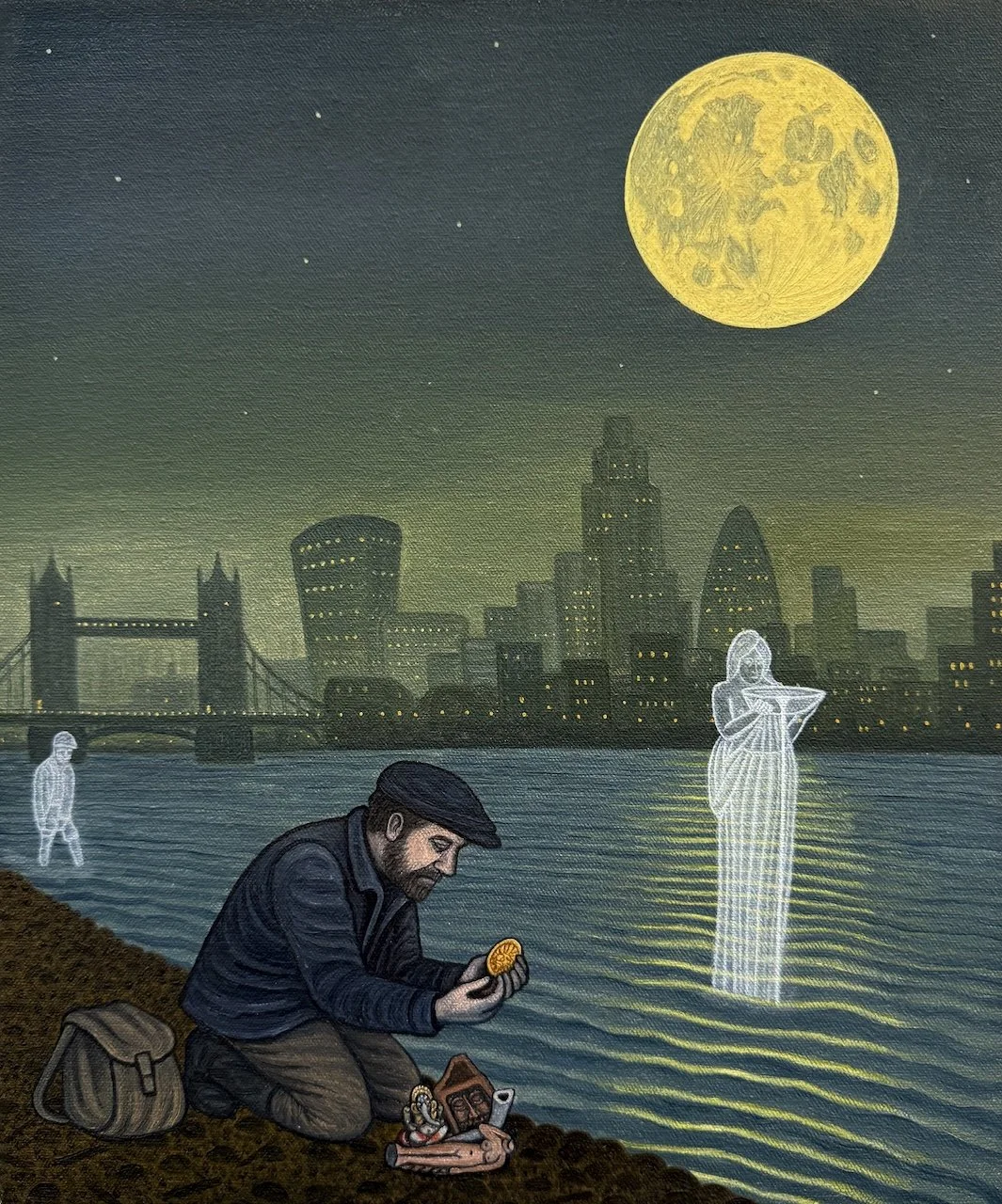A3 SIGNED PRINT - MOONLARKING AT FULL GRAIN MOON, 2025
A3 SIGNED PRINT - MOONLARKING AT FULL GRAIN MOON, 2025
160 GSM premium stock, signed by the artist.
MOONLARKING AT FULL GRAIN MOON, 2025
Oil on Canvas, 25cm x 30cm
Tonights full moon is known in old farming almanacs as the Grain Moon, marking the start of the wheat and barley harvest. The month takes its name from Augustus Caesar, the first Roman emperor, who consolidated Rome’s hold over its empire, including the grain-rich lands of Egypt. Though Augustus never set foot in ‘uncivilised’ Britain, he inherited Julius Caesar’s ambition to bring the island under Roman influence, and his reign set the stage for the conquest that came less than seventy years later. In time, Britain’s fields would be drawn into Rome’s vast grain network, another strand in the long history of land and harvest bound up with empire.
At the time of the full moon, Moonlarkers, aka mudlarkers, head to the exposed riverbanks revealed by the moon’s pull, searching for objects hidden by the tide during the rest of the month. Offerings to the Thames have been made since time immemorial, from when the river goddess Tamesis was worshipped, before being replaced by the figure of Old Father Thames, a shift from feminine divinity to the patriarchal imagery of the later church. Yet the river’s feminine presence endures. Among the finds on the foreshore are Hindu deities placed in the water by modern Londoners, as well as figures of the Virgin Mary, a Christian echo of older female deities.
During Victorian times and earlier, groups of poverty-stricken children would scour the foreshore in search of items to sell. In Jungian psychology, the Seeker archetype is one who searches through the remains of the past to recover what has been lost. Mudlarking is a form of time travel in miniature: every object pulled from the mud is a direct link to another era, whether it’s a medieval pilgrim badge, an ancient coin, or a clay pipe from the industrial age. Each carries the imprint of human lives, passed from hand to hand in one long continuum before sinking into the river’s silt, only to be brought to light again centuries later. In that moment of discovery, the mudlarker steps into the role of the Seeker, moving between worlds. The present day and the many pasts buried beneath their feet
